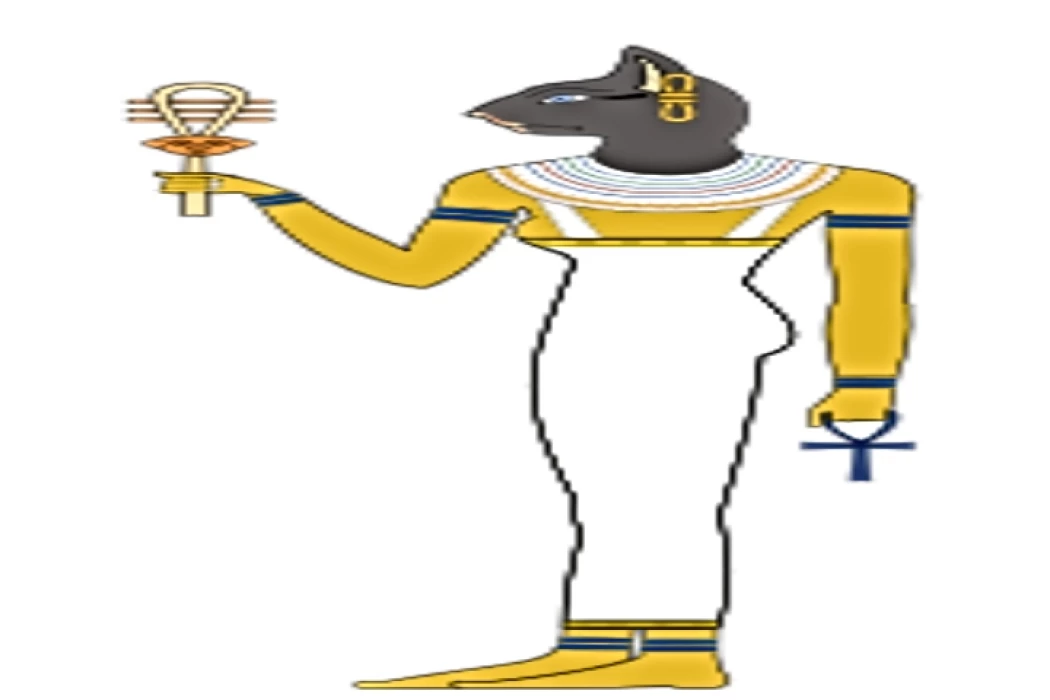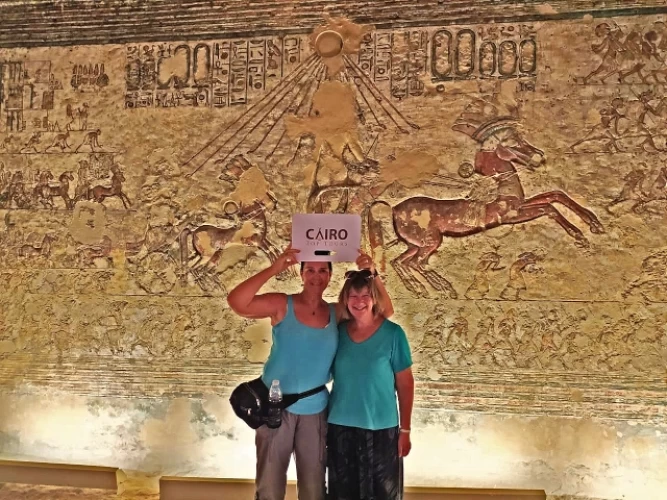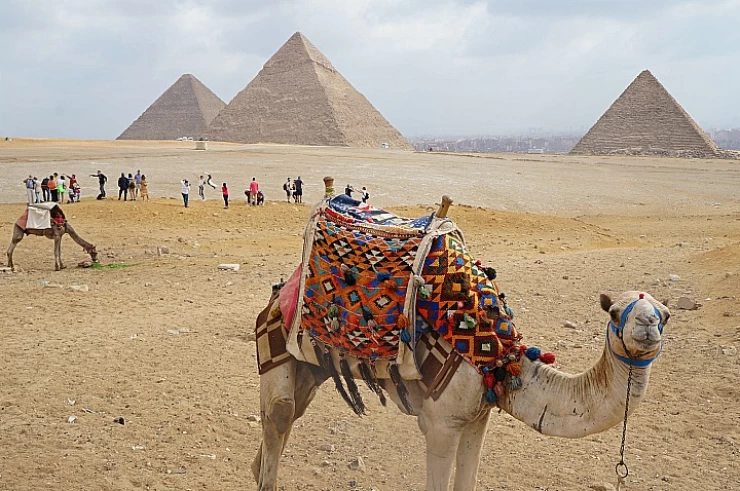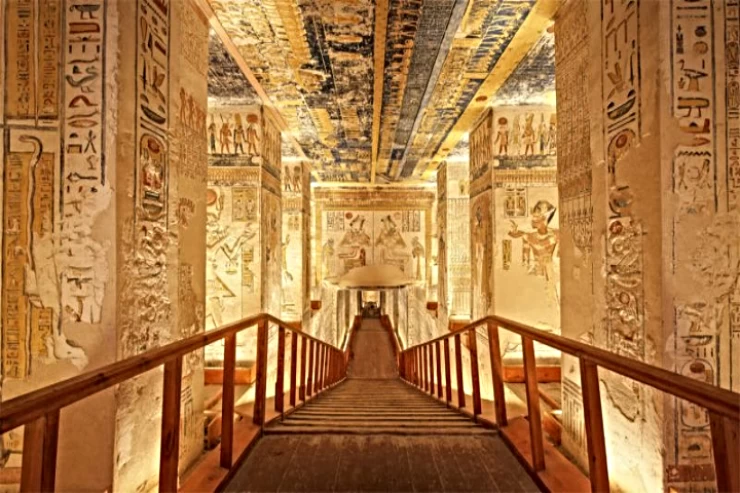
The Egyptian Cat Goddess Bastet
Bastet ( God of ancient Egypt )
Cats were known in ancient Egypt as "Mau", and had an important position in ancient Egyptian society. One of the Egyptian deities that took the form of a cat was Istet, one of the goddesses of the ancient Egyptians, who was embodied in the form of a gentle cat. She was merged with the goddess Sekhmet in the New Kingdom, where Sekhmet was represented in the form of a predatory lioness. The cat symbolizes the goddess Bastet, the daughter of the sun god Ra, who was depicted in drawings as a woman with the head of a cat. Since "Bastet" was closely related to women, she is therefore revered as the goddess of kindness and tenderness.
The ancient Egyptians raised The ancient Egyptians cared for cats in the households and mummified the animals in death the same way they did to the deceased. It was a punishable offense for anyone apart from the priest to kill a cat near a temple.
The oldest Bastet amulets are found in burials from the end of the Old Kingdom. The amulet was worn by women during their lifetime, primarily to place them under the goddess's care and perhaps to give them fertility. Several Egyptologists have suggested that the depiction of the cat may have sexual connotations, given that cats often appear in scenes with women. The animal was even considered a symbol of fertility, as cats were often depicted surrounded by their young, indicating this trait.
According to Herodotus, both men and women from Egypt enjoyed rides on boats which traveled along the Nile to the town of Bubastis. While some women would perform music with the sistrum musical instrument, their male counterparts would be playing the flute and others would be singing and dancing and beating the drums all through the journey. In the beginning of the celebration at Bubastis, there would be extremely extravagant offerings made. The period of this festivity was when the maximum amount of alcohol along with wine was taken as compared to any other time in the year. In addition, he states that ‘the grandeur of the temple devoted to Bastet could be found in the center of the city and was visible from all directions.
The ancient Egyptians were interested in mummifying animals, birds and reptiles that they considered to be the embodiment of some of the ancient Egyptian gods, in order to present them as offerings, including mummified cats that were offered to the goddess "Bastet". In the city of Bubastis, mummified cats were found buried underground, presented by pilgrims from all over Egypt to the goddess "Bastet". A number of amulets were also found there, in addition to bronze statues of the same goddess. In the late dynastic era and the Greek and Roman eras, loyal pilgrims offered thousands of bronze votive statues and tens of millions of mummified cats to appease the goddess in order to answer their prayers.
There is a much difference between the Sekhmt god and the Bastet god they have the same represented form but with a different mission so the lovely Bastet goddess of pity and mercy but Sekhmet is the goddess of war and power.
Bastet according to the ancient Egyptian religion is Atum`s wife and She also worshiped "Bastet" in Upper Egypt, where she was likened to or represented by the goddess "Death", the wife of "Amun" in "Thebes".

The relationship between Bastet and Hathor
The gods also had a relationship with the gods Hathor, each of the gods of fun, and Bastet sometimes represented the delegation of her hand rattling in the form of the head of Hathor, and the worship of the gods Bastet merged with the worship of the deities of Hathor in the era of the Old Kingdom, as the gods depicted Hathor on the walls of the temple of King Bibi I (the family) Sixth),
then Hathor appeared standing next to King Bibi the First, and it seems that this king was interested in worshiping the gods Hathor in the area of Basta, next to her main idol, the gods Bastet, and the gods were depicted on a stone found in the cabin of the aforementioned temple, and it can be considered a metaphor for this. The inscription to the local deities Bastet.

The god Hathor was famous for being Sekhm when she was angry, and she used to be calm and cheerful, and there was a similarity between the feast of the gods Bastet and the feast of the goddess Hathor, which was called:
The Feast of Resurrection. Just as the gods Bastet merged with the gods, Hathor, since the era of the Old Kingdom, as we have already indicated, the gods took the status of the gods to Hathor from the Middle Kingdom era, to merge with the gods Bastet, so the worship of the gods Bastet was linked to the worship of the god's Death in Thebes, so the gods were called Bastet:
the gods are death Bastet, and represented while placing on her head the feathers of the god Shu and two horns between them, the sun disk.

The meaning of Bastet
Her name is derived from the name of the city of Bast (Bubast (Bubastis in Greek)), the center of her cult in the 18th region of Lower Egypt, and it is likely that her sacred animal was not originally the cat but the lioness. She was also called "Lady of Basta" in connection with her place of worship, a title that remained in the texts until the end of ancient Egyptian history.

The goddess Bastet was depicted as a cat-headed woman holding in one hand the shakshikha of Hathor and in the other holding a basket. She is also sometimes depicted as a cat. The goddess Bastet is usually depicted as a seated female lioness, or as a female human figure with a lioness or cat head, and on some Second Dynasty steins she appears as a woman with a lioness head. Bastet has been associated with the cat since the Middle Kingdom.
The gods are death Bastet, and represented while placing on her head the feathers of the god Shu and two horns between them, the sun disk.

As for the husband of the gods, the death of Bastet, he is the goddess Ra Atum, my sister, Hur, who was represented in the form of a falcon whose head is crowned by the goddess Shu, and the connection of the gods Bastet with the gods died to regard the god Khonsu, the moon god, the son of the gods, death, a father of the goddess Bastet, and the appearance of the gods was associated with Bastet.
In the presence of the birth room, the ancient Egyptians believed that Bastet helped women to conceive children, while the god Khonsu helped the fetus to grow in the mother's womb.

Latest Articles
Admin
Aswan Governerate in Egypt
Aswan was known as ‘Sonu’ in ancient Egyptian times, meaning market, as it was a trading centre for caravans coming to and from Nubia. In the Ptolemaic era, it was called ‘Sin’ and the Nubians called it ‘Yaba Swan’. It was also known as the Land of Gold because it served as a great treasure or tomb for the kings of Nubia who lived there for thousands of years. Before the migration, Aswan's borders extended from Asna in the east to the border of Sudan in the south, and its inhabitants were Nubians, but after the Islamic conquest of Nubia, some Arab tribes settled there.
Admin
About Luxor Governorate in Egypt
The South Upper Egyptian area is home to the Egyptian governorate of Luxor. Its capital is Luxor, which was formerly Thebes, the capital of Egypt throughout multiple pharaonic eras. Its centers and cities are spread over both sides of the Nile River. The said governorate was established by Presidential Decree No. 378 of 2009, which was promulgated on the 9th of December of that year.
Admin
History of kafr El Sheikh Governorate
Kafr El Sheikh Governorate, located in the far north of Egypt in the Nile Delta, overlooking the Mediterranean Sea, is characterised by the diversity of natural life and environments, and is one of the Egyptian cities that can be visited after the end of the first semester exams at universities and schools, as it features many diverse tourist and recreational places at symbolic prices within everyone's reach.
Admin
Egypt's New Administrative Capital
The New Administrative Capital is considered the project of the era because it reflects a perfect image of the future and progress on the economic, cultural, social and civilisational level, as the capital is considered the new capital of Egypt at the present time. The importance of the New Capital is that it is a comprehensive transformation of the future of buildings, services and national and mega projects in Egypt.
Admin
Al Gharbia Governorate
The Governorate of Gharbia is inclusive in the geographical area of The Arab Republic of Egypt which is in the African continent, more specifically in the region surrounding the Nile delta, between Damietta and Rashid governance. To the control of the region from the north is Kafr El-Sheikh Governorate, from the south Menoufia Governorate, from the east – Dakahlia, Qalyubia Governorates, and to the west is the Beheira Governorate.
Admin
Hamata Islands (Qulaan Archipelago) in Marsa Alam
Each reserve has several sectors. In Wadi El Gemal Reserve, there is one of the natural areas called the Hamata area or Hamata sector in Wadi El Gemal Reserve. Its sectors are the perfect and most ecological, land and water, and host countless animals and plants found in the oceans and on the land.
















